Newer versions of Moodle have LTI tools like Hypothesis as Preconfigured tools, whereas older versions of Moodle ask you create an Activity for LTI tools and then select which LTI tool you plan on using. This article is for older Moodle installs where you first select the LTI tool Activity and then choose which tool. To read our article for newer Moodle versions please see this link.
This explains how to create a Hypothesis-enabled reading assignment. The app allows you to share a webpage or PDF document with the Hypothesis sidebar automatically added within the LMS. If you have not installed Hypothesis in Moodle yet, see our guide for LMS admin who are installing Hypothesis across a Moodle installation.
1. Navigate to your course page in Moodle
a. Click the button in the upper-right to Turn editing on.

2. Add an activity
a. Select the link to “Add an activity or resource”

b. In the “Add an activity” window, select “External tool”
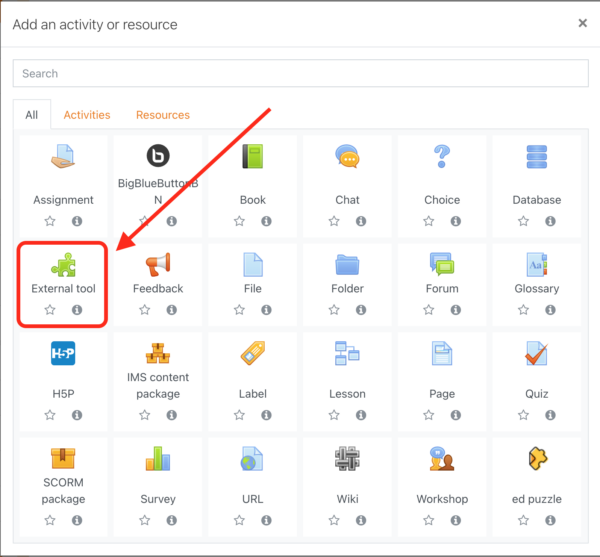
Note: The Hypothesis app may appear directly in the activity chooser if the Tool configuration usage is set to show in activity chooser as a preconfigured tool. If so, you can select it directly. You may want to set it this way if you are using Moodle LMS 4.3, since the External Tool option is no longer available in this version.

c. Configure your activity for a Hypothesis reading
- Activity name:
- This should be something specific to the assignment, like “Didion reading” or “Annotate Baldwin poem”.
- Preconfigured tool:
- Select Hypothesis from the drop-down. Note: You may not need to complete this step if either a) your campus Moodle administrator has installed the Hypothesis app for you or b) the tool has been configured to be chosen from the activity dropdown.
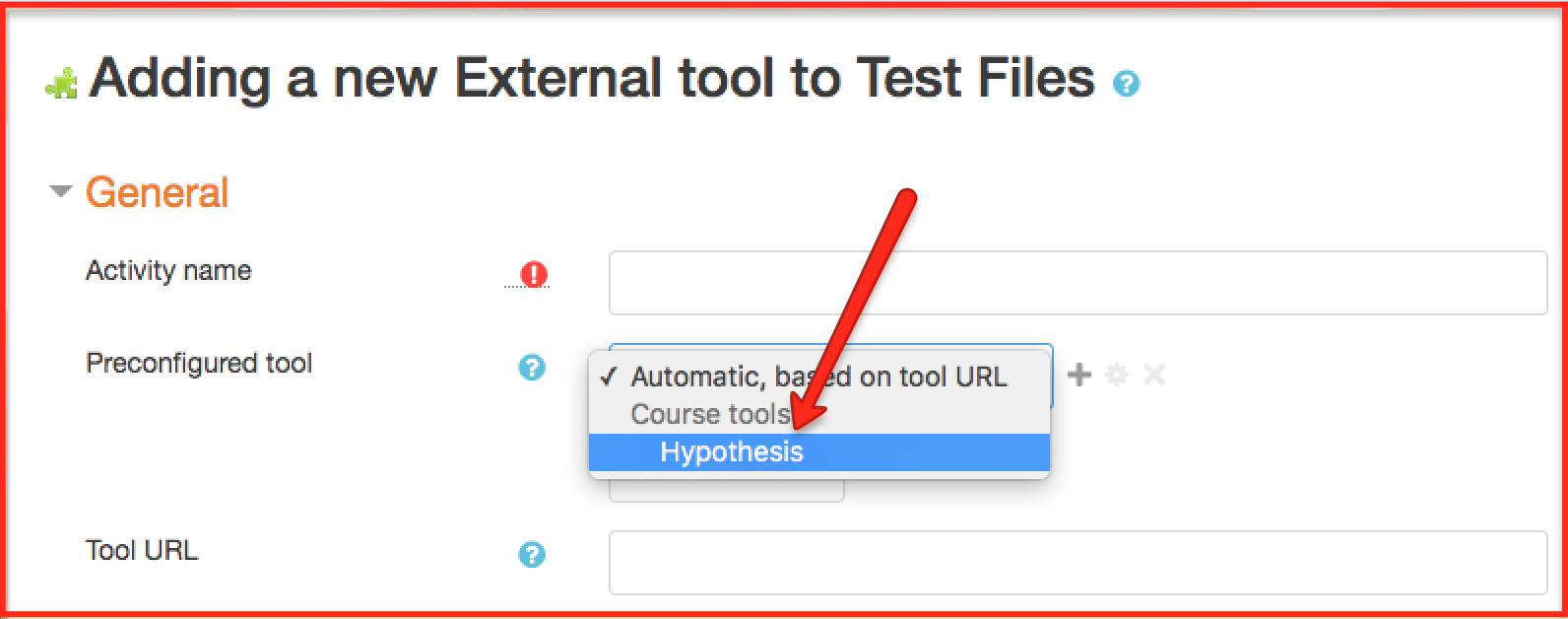
- Select Hypothesis from the drop-down. Note: You may not need to complete this step if either a) your campus Moodle administrator has installed the Hypothesis app for you or b) the tool has been configured to be chosen from the activity dropdown.
- Tool URL:
- Leave blank
To add an activity description (optional):
- Under General click Show more…
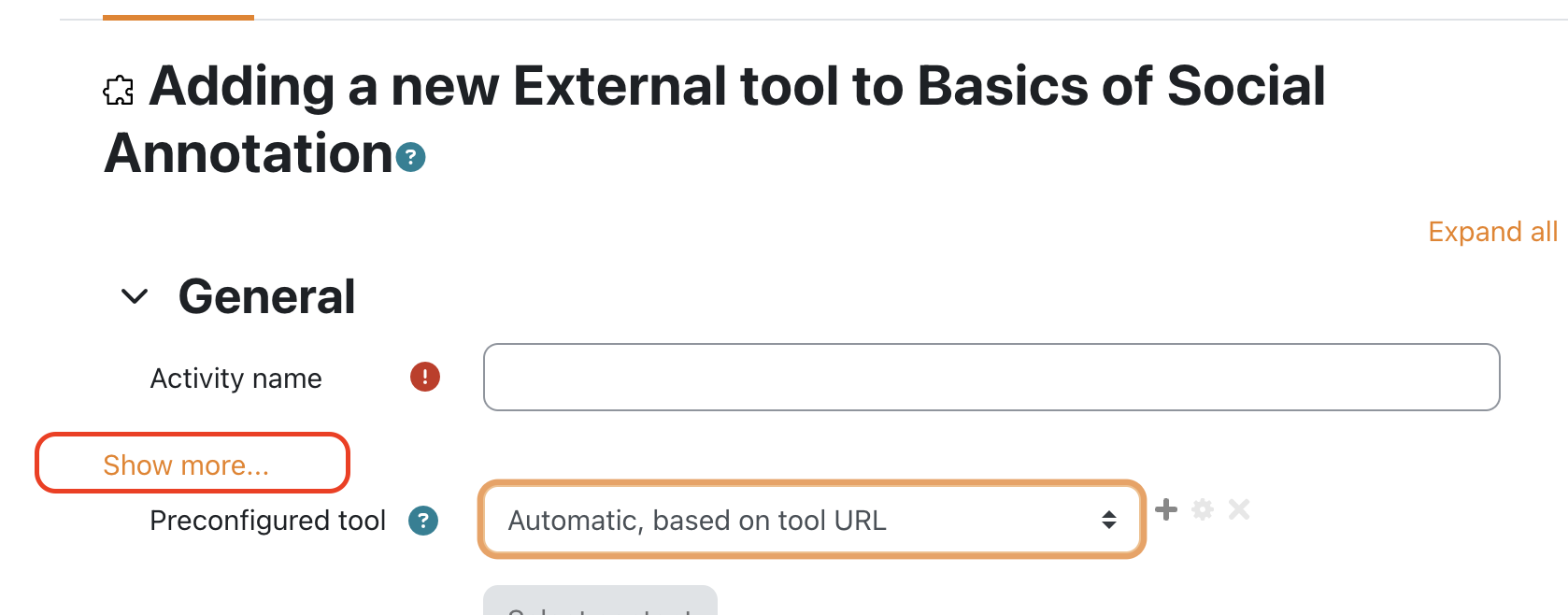
- Enter the description of the activity on the box provided. Note that the description will be visible to students.
- Optional: If you would like the activity description to be shown on the course page, put a check on the option “Display description on course page.”
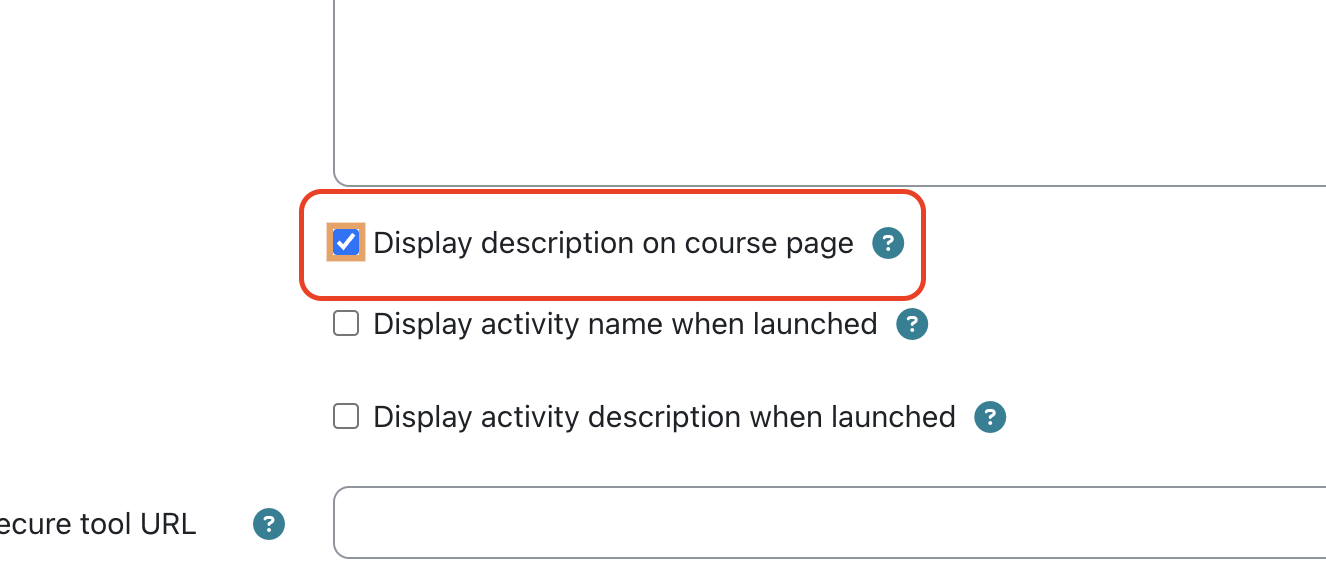
The image below shows how the activity description will look like when displayed on the course page.
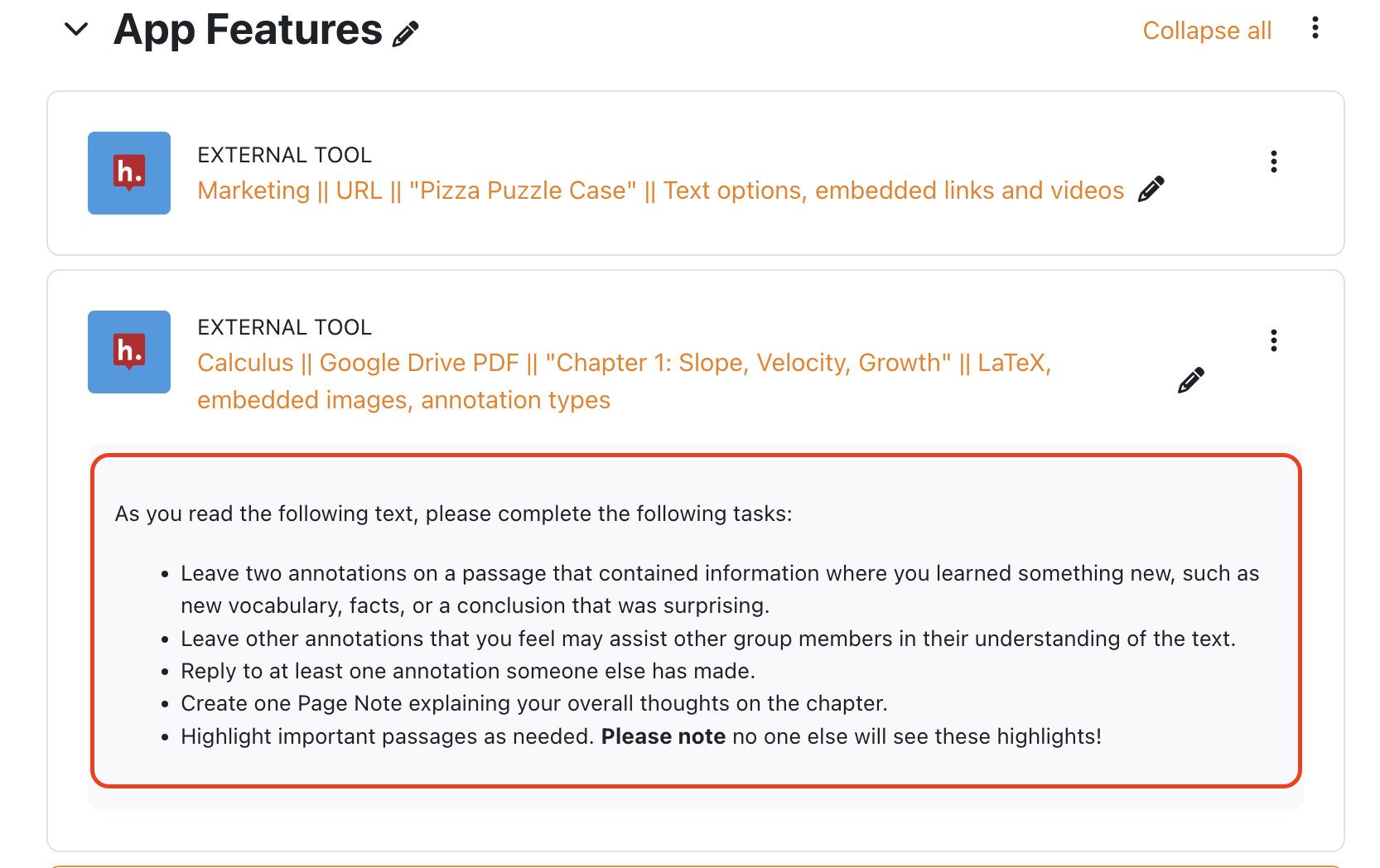
To change how the Hypothesis tool is launched, you can change the Launch Container setting (optional):
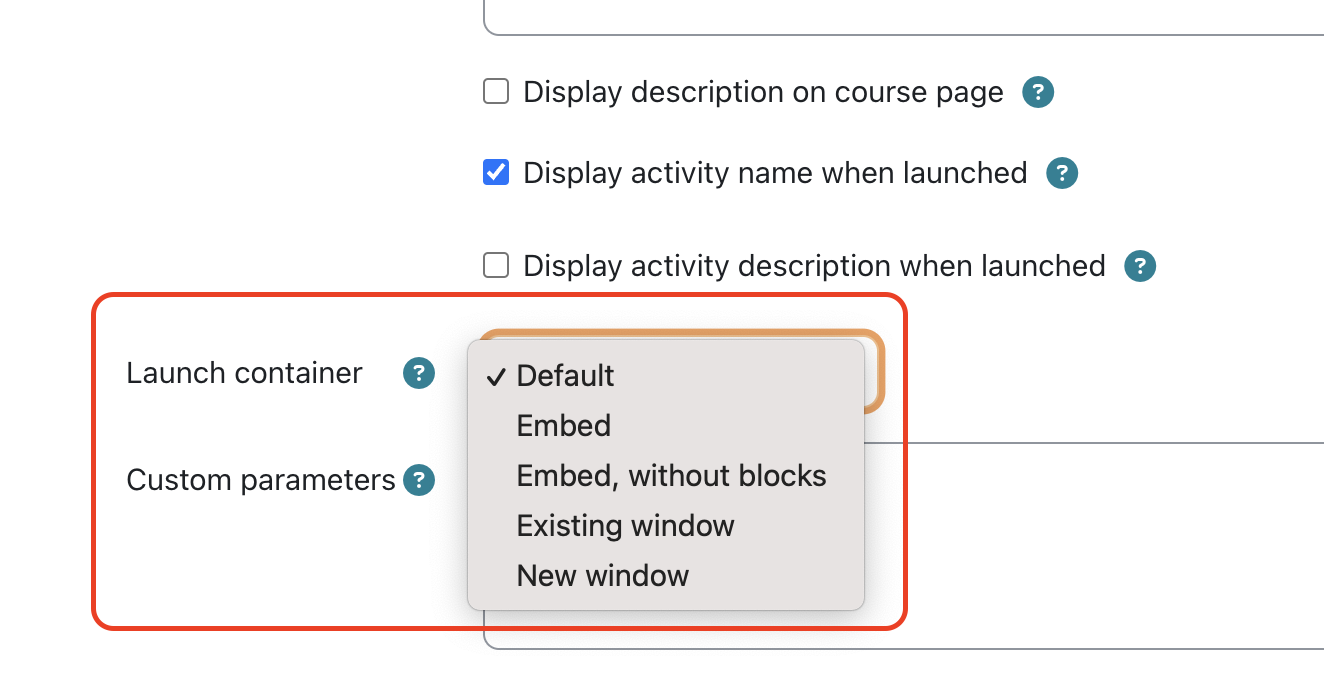
- Here’s how each setting changes the Hypothesis tool when launched.
- Default – same as New Window
- Embed – the Hypothesis tool will be embedded in the Moodle course page
- Embed without blocks – in the context of the Hypothesis tool, this option in effect works same as Embed
- Existing Window – launches the Hypothesis tool on the current window. Navigation buttons from Moodle will not be displayed on the window.
- New Window – the Hypothesis tool will open in a new window. (A new window or tab will open with the External tool and the old browser window containing the course page will not change.)
- Changing the Launch Container setting also affects the sequence of what will be displayed on the browser. Take note of how it affects how the Hypothesis assignment is launched as well as the activity description (assuming that the option Display activity description when launched is enabled).
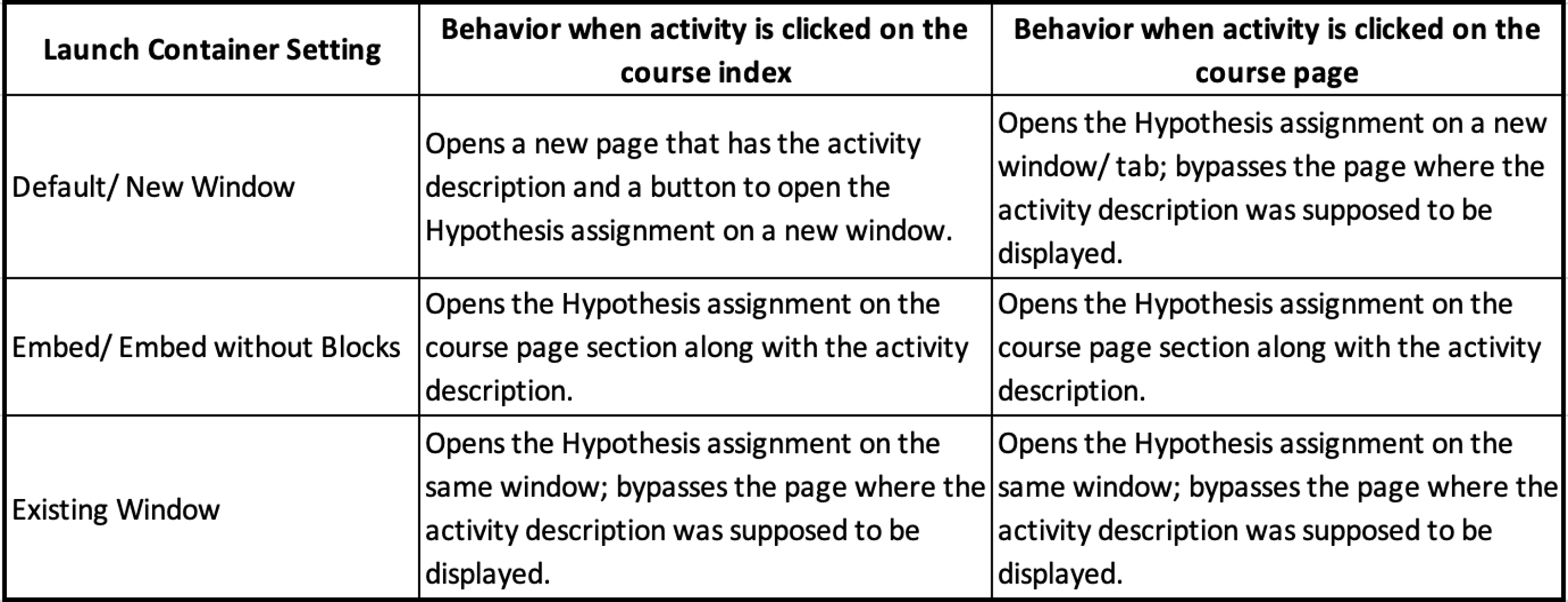
To enable grading (optional):
- Under Privacy, make sure “Accept grades from the tool” is checked

- Under Grade, make sure Type is set to “Point”.
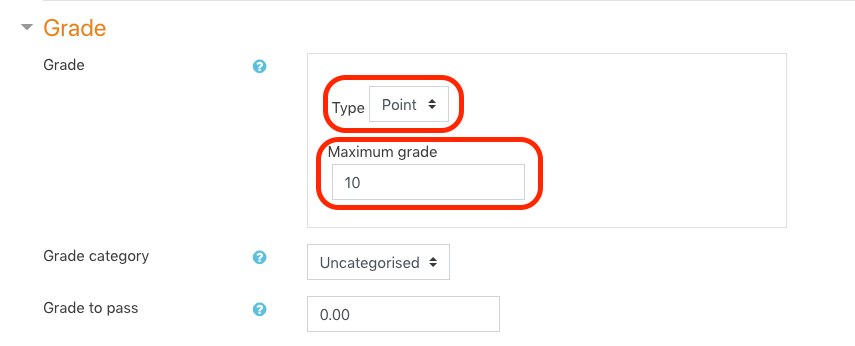
- Your Maximum grade can be any number, though in the Hypothesis grading panel you’ll give each student a score out of 10 points. This score is a percentage which is then applied to the Maximum grade. For example, if you set Maximum grade to 20 points, and you gave a student a 7/10 in the Hypothesis grading panel, the student’s final grade would be 14 points (because 70% of 20 is 14).
Click the button to Save and display.
3. Configure the Hypothesis reading
Depending on how the activity has been configured (Launch Container setting), the Hypothesis reading will either open immediately (embedded in the active window), or you will see a link to Open in a new window. If you see this link, click to open the reading in a new tab.

Document options

Notes:
PDFs must have optically recognizable text in order to be annotatable in the Hypothesis app. If you can select text in the PDF, no further action is needed. If you can’t select text in the PDF, you’ll need to follow our instructions for how to OCR-optimize a PDF.
After selecting the URL or PDF for your assignment, you may need to refresh the page, or close and re-open the assignment, before you can start annotating.
Click the button that says Enter URL of web page or PDF. On the Enter URL dialog, enter a link to a public web page or PDF. Please note that the content at the link must be publicly viewable (i.e., not behind a login or paywall).

Click the Submit button.
You must upload PDFs to the course first before completing the steps below. The Moodle File Picker does not allow for uploading new documents. You may put the PDFs in folders and the folder structure should be available in the picker.
Highlight the PDF file you wish to use and click the Select button.
The page must be available in the course before completing the steps below.
Highlight the Moodle page you wish to use and click the Select button.
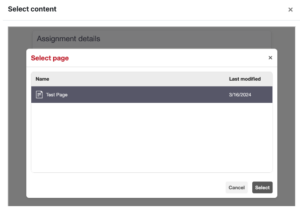
Using a PDF stored in Google Drive within the Hypothesis LMS app will change the sharing settings of the selected file to allow the PDF to be shown to anyone viewing the assignment. The exact setting on the file will be “Anyone with a link can view”. For more information please see our articles on Google Drive sharing settings and using Hypothesis with Google Drive.
Click the button that says Select PDF from Google Drive. You will be asked to select a Google account and/or authorize the Hypothesis LMS App to access Google Drive. To use an institutional Google Drive account you need to already have the ability to share documents with users outside your organization.
Search or browse to select a PDF to use in your reading. You may also click the Upload tab to upload a new PDF to use.
Only files for which you have edit permission are able to be used by Hypothesis.
Click on the file you want to use and then click the Select button.
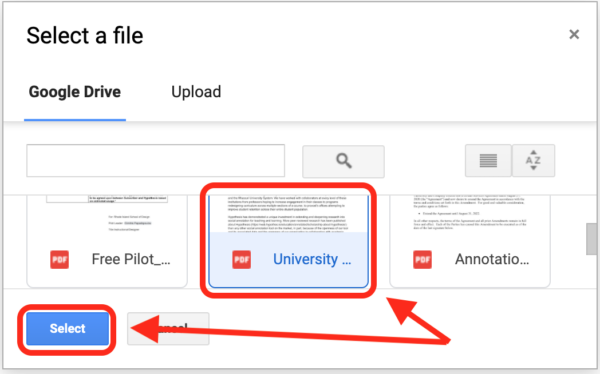
Note: This process will change the sharing permission of the selected Google Drive file to allow the PDF to be shown to anyone viewing the assignment. For more information please see our document about using Hypothesis with Google Drive.
Click the button that says Select PDF from OneDrive. You will be asked to select a Microsoft account and/or authorize the Hypothesis LMS App to access OneDrive. To use an institutional OneDrive account you need to already have the ability to share documents with users outside your organization.
Once logged on, browse to select a PDF to use in your reading. You may also select the Upload option to upload a new PDF to use.
Only files available in “My files” are able to be used by Hypothesis. You will be unable to use PDFs that belong in any Shared Libraries.
Click to select the file you want to use and then click the Open button.
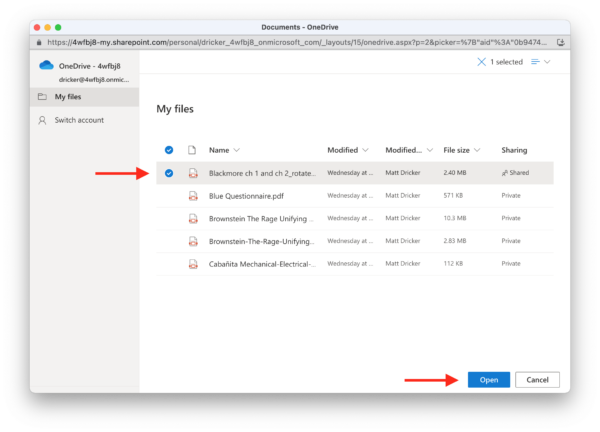
Note: This process will change the sharing permission of the selected OneDrive file to allow the PDF to be shown to anyone viewing the assignment. For more information please see our document about using Hypothesis with OneDrive.
When selecting a text from JSTOR it must be one that your school has license to access, and you must use the JSTOR stable URL. Complete instructions here.
Find and copy the Stable URL of the article you will be assigning from JSTOR.org. The stable URL is listed as part of the content metadata section of the page, usually under the title, author, and journal information.
Select the JSTOR article option in the Hypothesis picker during the assignment creation process and paste the stable URL into the text field. Click the right arrow and then accept JSTOR’s terms of use.

When selecting a text from VitalSource it must be one that your and your students have access to independent of Hypothesis. Complete instructions here.
Open your VitalSource bookshelf, and then find and copy either the text’s VBID or the text’s URL.

Select the VitalSource article option in the Hypothesis picker during the assignment creation process and paste the VBID or URL into the text field. Click the right arrow and then the “Select Book” button.

In the next screen select the starting point of the assignment (for example, you may have a specific assignment start on the book’s 2nd chapter instead of starting at the beginning of the book for every assignment).
With the starting point selected, click the Select button.
Choosing the YouTube option enables an instructor to create an assignment where users can watch the selected YouTube video and annotate its transcript simultaneously. Here’s what a YouTube assignment in Hypothesis looks like:
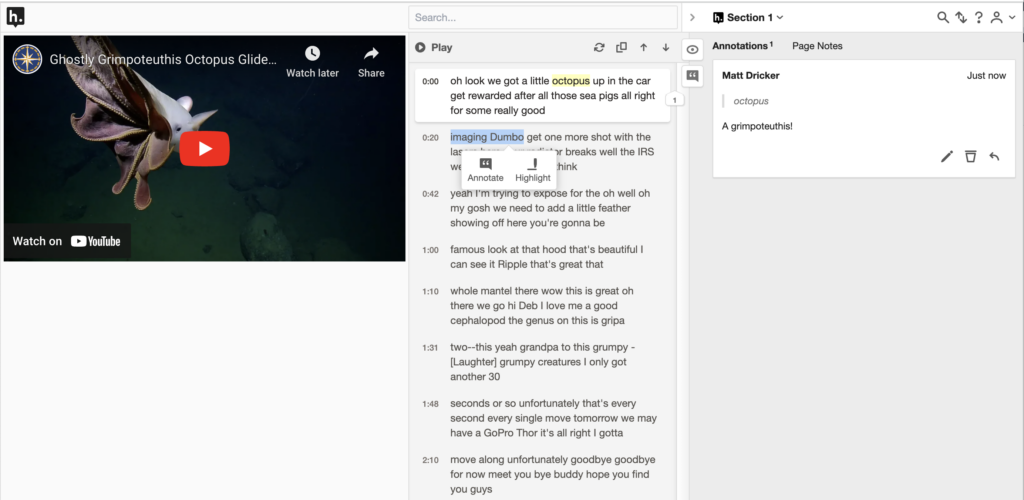
Click here to view the detailed steps on how to set up a Youtube video assignment in Hypothesis.
4. Indicate if this will be a Group assignment
By default your Hypothesis reading will make all annotations visible to all students.
You have the option to allow the creation of reading groups based on a pre-existing group set. To enable this, check the box to indicate This is a group assignment, then select the appropriate existing group set from the drop-down list.

If you do not want to designate the reading as a groups assignment, leave the Group assignment box unchecked.
Click the Continue button.
5. Confirm the Hypothesis reading loads
You should now see the reading you selected above now loaded with the Hypothesis sidebar open.
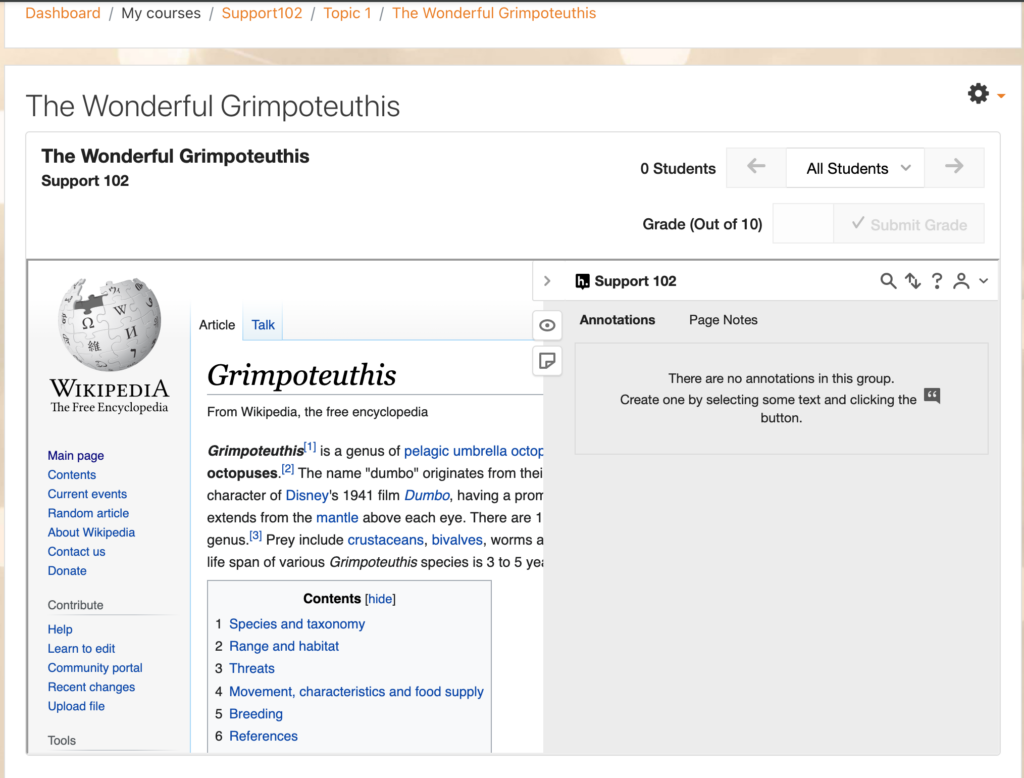
Edit and reconfigure the Hypothesis reading assignment
At any time you can reconfigure the Hypothesis reading assignment to use a new document:
- With the reading assignment open, click Edit next to the assignment name in the Grade Bar
